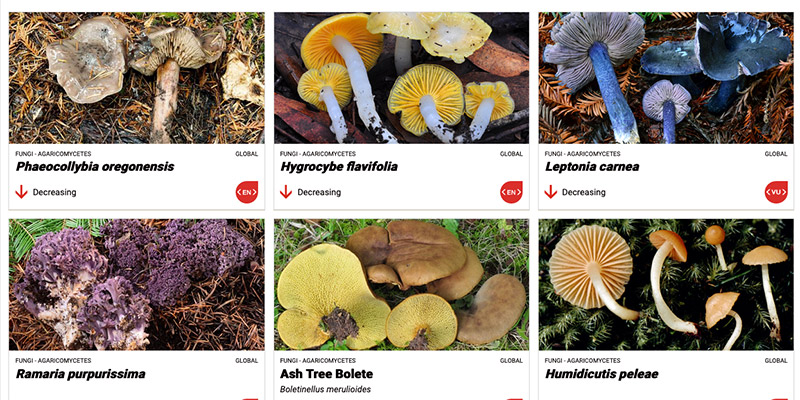
Fungi are critical for society, both through direct impacts on human health and the economy and through their intimate involvement in most essential environmental processes. However, even though they are not immune to the stressors that threaten animals and plants, including habitat loss, over harvesting, and climate change, fungi are often not included in conservation discussions, planning, or action. Efforts to change this situation are ongoing and progress in assessing the conservation status of fungi and engaging the broader conservation and land management community has been made over the past five years, but much work remains. Nationally, efforts are focused on providing amateur mycologists and other community scientists the tools and incentives to document the diversity, distribution, and habitats of mushrooms and related fungi. Ongoing conversations with NatureServe and other organizations and agencies are focused on how these field observations can best inform conservation activities in the United States and Canada. At the global level, work chairing the IUCN SSC Fungal Conservation Committee and Mushroom, Bracket, and Puffball Specialist Group, as well as co-leading the Global Fungal Red List Initiative, is focused on significantly increasing the number of fungi on the Global Red List, raising the profile of fungi in the conservation community, and having fungi included in conservation planning, sustainable use, and other initiatives. Having fungi explicitly recognized and included as separate organisms by conservation organizations and agencies —flora, fauna, and fungi—is a current initiative. (Mueller)

